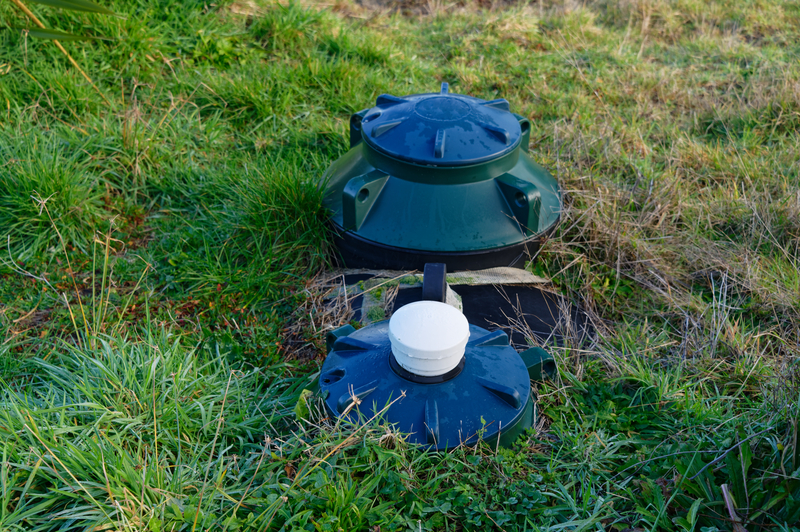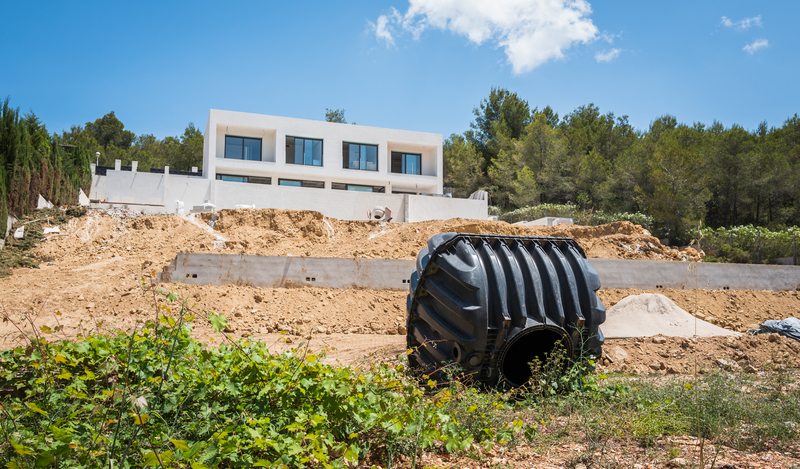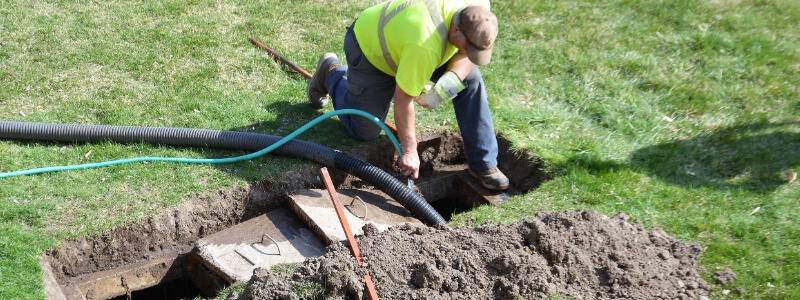In this article
How long do Septic tanks last?
If you've stumbled across this blog, it's probably because you find yourself thinking about the underground heroes that are septic tanks. Whether you have one in your home or not, a crucial question to consider when looking at these systems relies on the lifespan of these remarkable tools. So, how long do these tanks really stick around for?
In this blog, we're going to dive into the world of these sewage treatment plants, unraveling the secrets behind their longevity and find out how long of a shelf life they really have. We'll chat about what impacts how long they last and share some practical tips to keep them going strong.
Brief Overview of Septic Tank Systems
A septic tank is an essential component of wastewater treatment systems for properties not connected to public sewer systems. It serves as an underground chamber typically made of concrete, fibreglass, or plastic. Its job is to treat wastewater, including solid waste sewage from the household, to ensure that your drainage system flows properly.
The septic tank functions by separating solids and scum and treating wastewater from your home, allowing the liquids to pass through for further processing via an inlet pipe. Ultimately, the tank facilitates the breakdown of waste through biological decomposition processes, ensuring that only treated effluent exits the system for safe disposal.
So, how long do septic tanks last?
In short, the answer is: it depends on different factors. On average, a properly maintained, reliable septic tank can last 20 to 30 years and some well-designed concrete septic systems even have the potential to last between 40 to 100 years.
However, the longevity of a septic tank is influenced by many factors - some out of the septic tank's control. Let's look at some of these influences to understand better how a septic tank operates and how they can be hindered.
Factors Influencing Lifespan
The lifespan of a Septic Tank consists of several crucial factors. Let's take a look at the main factors below so that you have a good idea of how they operate best.
Quality of Installation:
Proper installation procedures are essential for ensuring a septic tank's durability and optimal functionality. Attention to detail during the installation, from the initial site preparation to the final inspection, is critical. For maximum life-span, let's take a look at how the septic tank installation process should go.
- Site Assessment: Before installation, a thorough site assessment should be conducted to determine the best location for the septic tank. Factors such as soil composition, water table levels, and proximity to structures must be considered to avoid future complications.
- Proper Sizing: The septic tank should be properly sized according to your needs and the needs of the household or property it serves. Undersized tanks can lead to frequent backups and overflows, while oversized tanks may not function efficiently.
- Precise Placement: The tank should be placed at the correct depth and orientation to ensure proper wastewater flow. Additionally, the inlet and outlet pipes must be installed at the appropriate angles to facilitate waste movement through the system.
- Secure Connections: All connections, including pipes, fittings, and seals, should be securely installed to prevent leaks and potential contamination of the surrounding environment.
- Ventilation: Adequate ventilation is crucial for the septic tank to function effectively. Proper vent installation allows for the release of gases produced during the decomposition process, maintaining a balanced ecosystem within the tank.
- Backfilling: Backfilling around the tank is necessary to prevent shifting or damage. The soil should be compacted in layers to provide stability and support for the tank structure.
- Inspection and Testing: Once the installation is complete, thorough inspection and testing should be carried out to ensure that all components are functioning correctly. This includes checking for leaks, conducting a hydraulic load test, and verifying proper drainage.
Tank Material
The material of the tank is a crucial factor in determining its longevity and overall performance. When comparing concrete and plastic tanks, each material offers distinct advantages and vulnerabilities that should be considered before making a choice.
- Concrete Tanks:
- Durability: Concrete tanks are known for their durability and longevity. When well-designed and properly maintained, concrete tanks can last 40 to 100 years, making them a reliable long-term storage solution.
- Strength: Concrete tanks are sturdy and robust, able to withstand external pressure and heavy loads. They provide excellent structural integrity and can serve as their retaining walls in specific applications.
- Maintenance: While concrete tanks have a longer lifespan, they may require periodic maintenance to prevent cracks, leaks, and corrosion.
- Plastic Tanks:
- Cost-Effective: Plastic tanks are generally more affordable than concrete tanks, making them a popular choice for budget-conscious consumers. They also require less labour and less time for installation.
- Portability: Plastic tanks are lightweight compared to concrete tanks, making them easier to transport and manoeuvre during installation. This portability can be advantageous in situations where flexibility is needed.
- Chemical Resistance: Plastic tanks are inert and non-reactive to most chemicals, ensuring the stored water remains uncontaminated and safe for various uses.
When deciding between concrete and plastic tanks, factors such as durability, cost, maintenance requirements, and intended use should all be considered to select the most suitable option for your specific needs. Proper installation and regular maintenance are key to maximizing the lifespan and efficiency of any water storage tank.
Soil Conditions:
The soil composition and acidity levels in which a septic tank is installed play a crucial role in the overall performance and longevity of the system. Understanding how soil conditions can affect the tank's structural integrity is essential for ensuring the proper functioning of the entire septic system.
- Soil Composition:
- Impact on Structural Integrity: The composition of the soil, including factors such as texture, density, and permeability, can significantly impact the structural integrity of the septic tank. Too loose or compacted soil may exert excessive pressure on the tank walls, leading to potential cracks or leaks.
- Drainage Capability: Proper soil composition is vital for adequate drainage around the septic tank and drain field. Well-draining soils facilitate the movement of wastewater away from the tank, preventing saturation and potential system failure.
- Acidity Levels:
- Corrosion Risk: Acidic soils can risk the materials used in septic tanks. The acid in the soil can accelerate the breakdown of tank components, such as concrete or metal, leading to corrosion and structural damage over time.
- Microbial Activity: Soil acidity levels can also impact the activity of beneficial microorganisms within the septic system. Extreme pH levels can disrupt the microbial balance, affecting the decomposition of waste and overall system efficiency.
- Soil Testing and Assessment:
- Importance of Evaluation: Before installing a septic tank, conducting a soil analysis is crucial to assess the suitability of the soil for wastewater treatment. Factors such as nutrient content, pH levels, and drainage capabilities should be evaluated to ensure optimal system performance.
- Mitigation Strategies: Based on the soil testing results, mitigation strategies can be implemented to address any issues related to soil composition or acidity. This may include soil amendment, installation modifications, or selecting appropriate tank materials that are resistant to corrosion.
By considering the impact of soil conditions on septic tank performance and taking proactive measures to address potential challenges, you can enhance the longevity and efficiency of your septic systems. Regular monitoring of soil conditions and maintenance of the tank environment can prevent costly repairs and ensure the system's smooth operation over time.
Maintenance Practices:
Maintaining a consistent schedule of proper care and attention is essential for extending the lifespan and preserving the efficiency of a septic tank system. By implementing regular maintenance practices, you can mitigate potential issues, prevent costly repairs, and promote the optimal functioning of your septic system.
- Scheduled Inspections:
- Routine Check-ups: Regular cleaning and inspections by qualified professionals are vital to assess the septic tank's condition and identify any early signs of damage or malfunction. These inspections can uncover leaks, blockages, or excessive sludge accumulation before they escalate into more significant problems.
- Frequency: Inspections should be conducted at least once a year to ensure that the tank operates as intended and promptly address any minor concerns.
- Timely Emptying:
- Preventative Maintenance: Pumping out the septic tank at recommended intervals is crucial for preventing backups, overflows, and system failures. Regular pumping removes accumulated solids and prevents them from clogging the drain field or causing damage to the tank.
- Pumping Frequency: The pumping frequency depends on various factors, including household size, water usage, and tank capacity. On average, septic tanks should be pumped every 3 to 5 years to maintain optimal functionality.
- Efficient Water Usage:
- Conservation Practices: Responsible water usage habits, such as fixing leaks promptly, using water-saving fixtures, and spreading out laundry loads, can help reduce the strain on the septic system. Conserving water minimizes the volume of wastewater entering the tank, prolonging its lifespan.
- Proper Disposal Practices:
- Avoiding Harmful Substances: Refrain from disposing of non-biodegradable items, chemicals, grease, or excessive amounts of household cleaners down the drain. These substances can disrupt the microbial balance in the tank, leading to system imbalances and reduced efficiency.
- Landscaping Considerations:
- Root Intrusion Prevention: Plant trees and shrubs safely from the septic tank and drain field to prevent root intrusion. Invasive roots can cause damage to the tank structure and compromise its integrity over time.
What to Look out For
Like anything, there is potential for septic tanks to fail - and there are some important signs you can look out for to ensure the correct response. Fixing any septic tank issues as soon as signs arise will ensure that small problems do not become bigger ones. Keeping on top of your sewage tanks will help with the longevity of your septic tank and keep any hazards to a minimum. Let's take a look at important problems to look out for.
- Odours and Sewage Backups: Foul smells around the septic tank area or along drains can indicate issues with the system. Additionally, sewage backing up into the house clearly shows a failing septic system.
- Green Patches in the Drain Field: If you notice unusually green patches of grass near the drain field, it could signal problems with the septic system. This may be due to excess moisture or leakage from the system affecting plant growth.
- Slow Draining Fixtures: Fixtures such as sinks, showers, and toilets draining slowly can indicate septic system issues. This may suggest a blockage or a full tank that needs attention to prevent further problems.
Final Thoughts
So, how long does a septic tank last? If it's installed well and maintained carefully, the average system can typically last you 20-30 years - but not everything is perfect. Understanding the importance of regular inspections, timely pumping, and proper waste disposal habits is crucial for your septic tanks success.
Cotswold Drainage
Here at Cotswold Drainage, we're here to help you achieve your drainage needs and ensure you have the best sewage treatment plant options for your home. Whether you're looking into shallow dig septic tanks, a larger septic tank system, or just want more information about your drainage field or the Environmental Protection Agency, do not hesitate to contact us today.
Get in touch
Contact our friendly and professional team via form, phone or email for any drainage issues you may have.
From blocked drains to septic tank repairs and replacements, we're here to help. We have over 25 years of experience and offer 24/7 emergency callouts.
-
01386 882324
-
WhatsApp
-
This email address is being protected from spambots. You need JavaScript enabled to view it. -
See what our customers think






